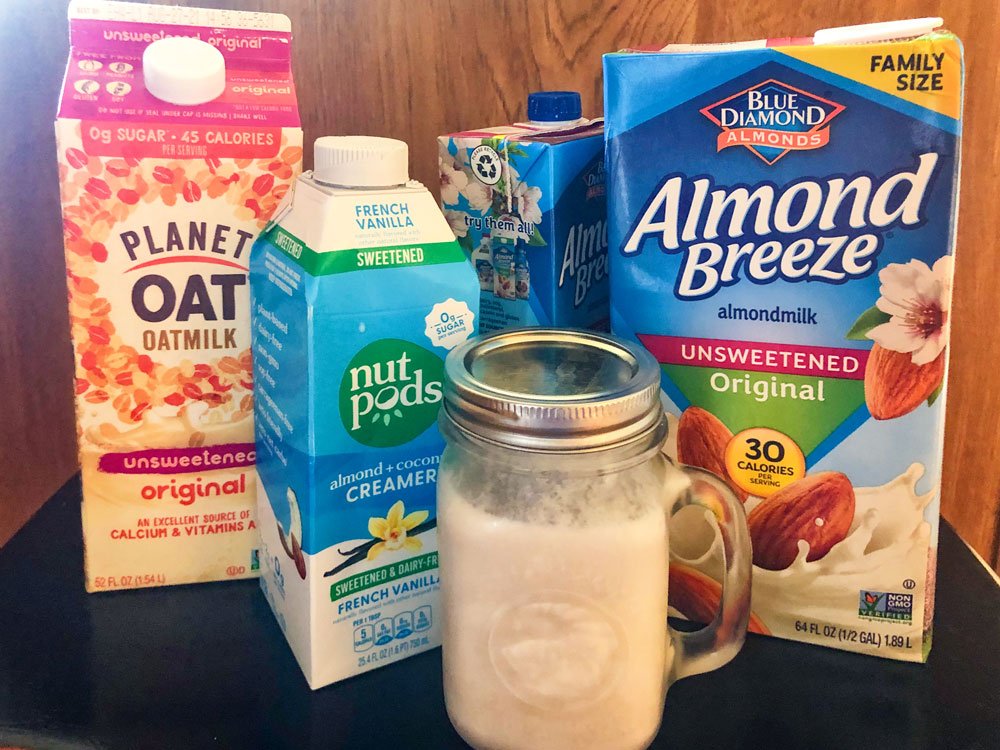Making sense of non-dairy milk options
Article and photo by Lisa Nicklanovich

There are many non-dairy milk alternatives to choose from for those who have dairy allergies or who prefer a plant-based option.
Many milk drinkers are opting for milk alternatives for a variety of reasons, including dairy allergies, lactose intolerance, a vegan lifestyle, or simply preferring a non-dairy option. There are many plant-based, non-dairy options to choose from with the most popular being soy, almond, rice, coconut, hemp and oat milk. Generally, what is in these milk alternatives?
Soy milk, the first plant-based alternative to appear on the market, is produced by soaking, crushing and cooking soybeans, then extracting the liquid. This milk alternative has the highest amount of protein per serving of the options. However, soy allergies and intolerances are relatively common.
Almond milk is made from skinned or blanched almonds that are finely ground and blended with water, then filtered to remove solids. High in vitamin E, which is naturally present in almonds, almond milk is the richest in monounsaturated fat of all the milk alternatives. One resident shared, “We like Simply Almond milk because you can read every ingredient without having to Google the crazy weird ones.”
Coconut milk is made by blending water and coconut milk squeezed from grated coconut flesh. This drinkable beverage is not to be confused with the canned coconut milk used in sauces. High in healthy saturated fat, coconut milk has a natural sweetness and creamy texture.
Hemp milk is made by blending hemp seeds with water then filtering the mixture to remove the solids. Like rice milk, hemp milk is free of common allergens and beats out the others when it comes to essential fatty acids. It also provides dietary iron and is a good source of magnesium, but it is not a good source of protein.
Rice milk is made by blending together cooked rice, usually brown, water, rice syrup and rice starch. Most commercial versions also contain thickening agents, sugar and flavorings. Rice is considered hypoallergenic, making it a safe option for those who have sensitivities to not just dairy, but also nuts and soy. Rice milk has a high glycemic index that can destabilize blood sugar levels.
Oat milk is made by blending rolled oats and water, then straining. Oat milk was the milk alternative of choice for residents polled on a community forum. Hannah Smith said, “Oat milk tastes the closest to milk to me. It has the same texture and doesn’t change the flavor of whatever you add to it. I choose oat milk for its environmentally friendly aspects as well.”
One resident said he sometimes blends oat and coconut milk together, making his own unique blend. Manufacturers are picking up on this trend and offering non-dairy blends of milk and coffee creamers.
The nutrient profile will differ for each brand, as some manufacturers add sugar, salt and other ingredients; always check the label.